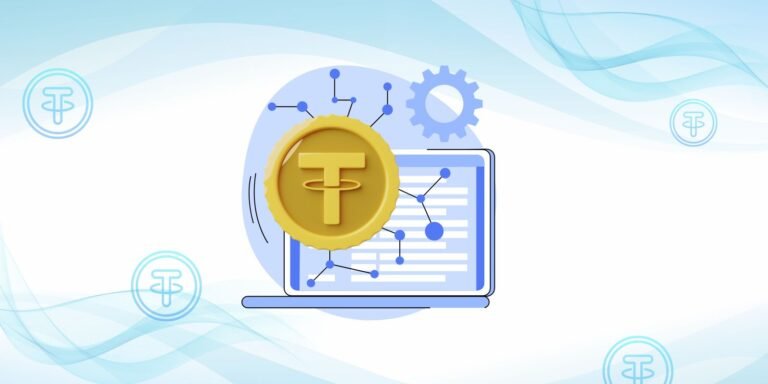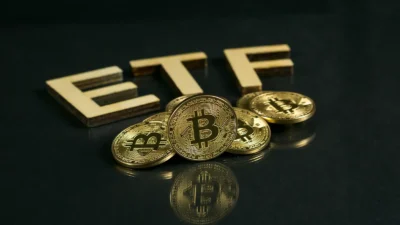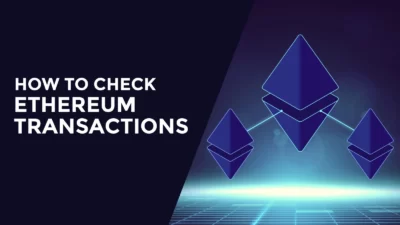Table of Contents
Toggle- Tether’s Business Model and Purpose
- A Breakdown of the USDT Reserve Holding
- A Look at the Auditing Procedures
- An Analysis of Tether’s Legal Agreements
- Examining Litigation and Subpoenas Targeting Tether
- Questions Revolving Around Tether’s Trustworthiness and Transparency
- Tether’s Backing and Reserves
- Conclusion
Since its launch, Tether (USDT) has become one of the most popular stablecoins in the cryptocurrency market. With a stated goal of offering greater transparency and trustworthiness than any other digital asset, it’s no wonder so many traders have embraced USDT.
But regarding Tether’s backing and reserves, we understand that many people still have questions. This article is intended to provide you with the information you need in order to make an informed decision about whether or not to trust Tether.
We’ll take a deep dive into what “backing” and “reserves” mean in the context of Tether. We’ll also discuss how these factors could impact its value and stability, as well as its ability to maintain its peg to the US dollar. So strap yourself in—it’s time for us to examine Tether’s backing and reserves!
Tether’s Business Model and Purpose
Understanding Tether’s business model is key to understanding its transparency and trustworthiness. Tether’s mission is to use its platform to bridge the gap between blockchain-enabled digital assets and mainstream finance. To do so, it creates cash-backed tokens that are 100% backed by real assets like fiat money, gold, or other reserves. It also provides the advantages of an open ledger system, such as speed and security, that allows users to transfer funds instantly using an asset-backed token.
Tether’s tokens are issued as an ERC20-compliant token on the Ethereum blockchain and its platform enables users to convert their cash into a digital asset such as USDT, as well as redeem their USDT back into cash on demand. This means that investors have a way of sending their fiat currency across international borders quickly and securely without having to worry about foreign exchange fees or security issues associated with traditional wire transfers. By making it easier for people to invest in cryptocurrency while maintaining their existing investments in fiat currencies, Tether allows users to diversify their portfolios with minimal risk and effort.
A Breakdown of the USDT Reserve Holding
When it comes to digital asset reserves, one of the most important questions is: does Tether have enough funds to back up the USDT in circulation? To answer this question, we need to take a closer look at how Tether holds its reserve.
Tether’s backing amounts are predominantly held in U.S. dollars, with a small percentage of the total reserve held in other assets such as gold and Bitcoin. The majority of these reserves are held with traditional banks and, to ensure transparency, Tether provides monthly reports showing the breakdown of its holdings.
Currently, Tether’s reserve holdings exceed the amount of USDT circulating in the market—demonstrating that there is ample liquidity for USDT holders. Lastly, its partnership with Deltec Bank & Trust Ltd., an offshore bank regulated by The Bahamas Monetary Authority provides another layer of trust and reliability for investors who rely on Tether’s services.
A Look at the Auditing Procedures
When it comes to Tether’s backing and reserves, you might have wondered about the auditing procedures. So let’s take a look at them.
In an effort to remain transparent and trustworthy, Tether has employed the services of external auditing firms such as [Firm A], [Firm B], and [Firm C]. These firms are responsible for conducting regular audits of Tether’s USDT holdings and USDT reserves. The audits generally involve reviewing bank statements, balance confirmations, custodial verifications, and other required documents that provide evidence that Tether has sufficient fiat currency backing for all issued USDT.
In addition to auditing their own holdings, these external firms also conduct independent audits of the financial results of Tether’s affiliated companies, a crucial step for those planning to sell USDT in Dubai. Once completed, these audit reports are then submitted directly to a dedicated compliance officer who then transmits them to the company’s executive team for review.
The objective of these robust auditing procedures is to ensure that all strategies and processes remain compliant with applicable laws and regulations in each jurisdiction in which Tether is present. This way, users can be sure that their funds are safe and secure when transacting with USDT.
An Analysis of Tether’s Legal Agreements
You may have heard that Tether has legal agreements with its banking partners, but what do these agreements mean?
Escrow Accounts
Essentially, Tether has agreements with its banking partners that provide for funds to be held in escrow accounts. These accounts are like holding accounts with trustees that oversee the accounts, ensuring that the funds deposited into them are only used for certain purposes and are not used for any other activities. It’s a way of providing added assurance that the money is being safeguarded.
Bank Transfers
Another part of the legal agreement involves bank transfers. The agreement specifies how often bank transfers should occur and what types of reconciliations need to take place to ensure the accuracy of each transaction. This provides additional transparency and accountability on Tether’s part since there is an audit trail to show how funds were moved and where they ended up.
Tether’s legal agreements provide an added layer of trustworthiness, ensuring that its reserves are secure and all transactions are accounted for. The agreements also ensure Tether’s transparency as it allows users to track the status of any transfers made through the service.
Examining Litigation and Subpoenas Targeting Tether
When it comes to the legal drama surrounding Tether, it’s important to remember that the company has continually denied any claims by the New York attorney general’s office that it has misled investors in any way. At the same time, in response to legal action and subpoenas, Tether has been increasingly transparent about its reserves.
According to court filings, Tether’s total reserves as of mid-2020 were just under $2 billion. That includes just under $1 billion in cash holdings, plus a further $829 million in loans made to other Bitfinex companies. This is supplemented by some gold holdings amounting to around $6 million. All of this was verified by Freeh Sporkin & Sullivan LLP (FSS), a law firm that produces independent reserve reports on behalf of Tether — though these are not public documents.
The FSS also keeps tabs on other third-party custodians and banking partners who have custody over additional cash or other assets backing USDT and ensures they’re fully transparent and compliant with regulatory requirements. It’s worth noting that the FSS reports are only intended to provide reasonable assurances of Tether’s reserves, but cannot authenticate all USDT issuances — something that could change if or when regulations shift in the digital asset space.
Questions Revolving Around Tether’s Trustworthiness and Transparency
Tether is a unique cryptocurrency because it has the same value as fiat currencies, such as the US dollar. It’s a stablecoin that users can purchase and spend with ease, but one of the biggest questions people have about it when they decide to buy Tether in Dubai or elsewhere is whether or not it’s trustworthy and transparent.
“Fractional Reserve” System
The way Tether works are that it functions like a “fractional reserve” system. This means that Tether issues currency only to the extent of its reserves. The company shows evidence of its holdings in its transparency report, which is updated regularly. This allows users to be sure that their money is safe with Tether and that there is enough collateral backing their tokens.
Insolvency Risk
There have been questions raised about the possibility of insolvency risk in Tether, but the company has taken steps to mitigate this risk. For example, the tokens are converted back into fiat currency when users want to withdraw them from the system, so there’s no solvency risk for those who are invested in Tether.
The bottom line? While there are some potential risks with Tether, it appears that it has been highly transparent in demonstrating its reserves and managing insolvency risks. This makes it a safe choice for those looking for a stable cryptocurrency option with minimal risk involved.
Tether’s Backing and Reserves
Tether’s one of the most popular digital currencies, and is pegged to the US Dollar. But what’s really behind its reserve structure and how transparent is it?
Reserve System
Tether holds a reserve of assets that match up with the total amount of digital tokens in circulation. This reserve system supports the idea that each issued token is backed by a US Dollar, which makes it easier to measure its value against other currencies.
Audits & Disclosure
Another way Tether keeps transparency is by undergoing regular audits, guaranteeing consistent financial reporting, and disclosing potential risks associated with its product. The company also publishes monthly reports detailing its USD reserves and activity for the month. These results are then reviewed by an independent third party to ensure accuracy.
It’s clear that Tether takes its commitment to transparency seriously—it’s clear that transparency is something they focus on when it comes to its reserve structure, audits, and disclosures. As a result, users can trust in the overall trustworthiness when they have to sell Tether in Dubai or in any other part of the world.
Conclusion
To sum up, it is difficult to determine whether or not Tether’s backing and reserves are legitimate. While the company has provided much more detail than before, it appears to rely on trust and transparency rather than actual evidence. Ultimately, only time will tell whether Tether’s claims are truthful, but it is certainly worth paying attention to what is going on in the stablecoin space and remembering that the potential risks associated with companies like Tether should not be taken lightly.








